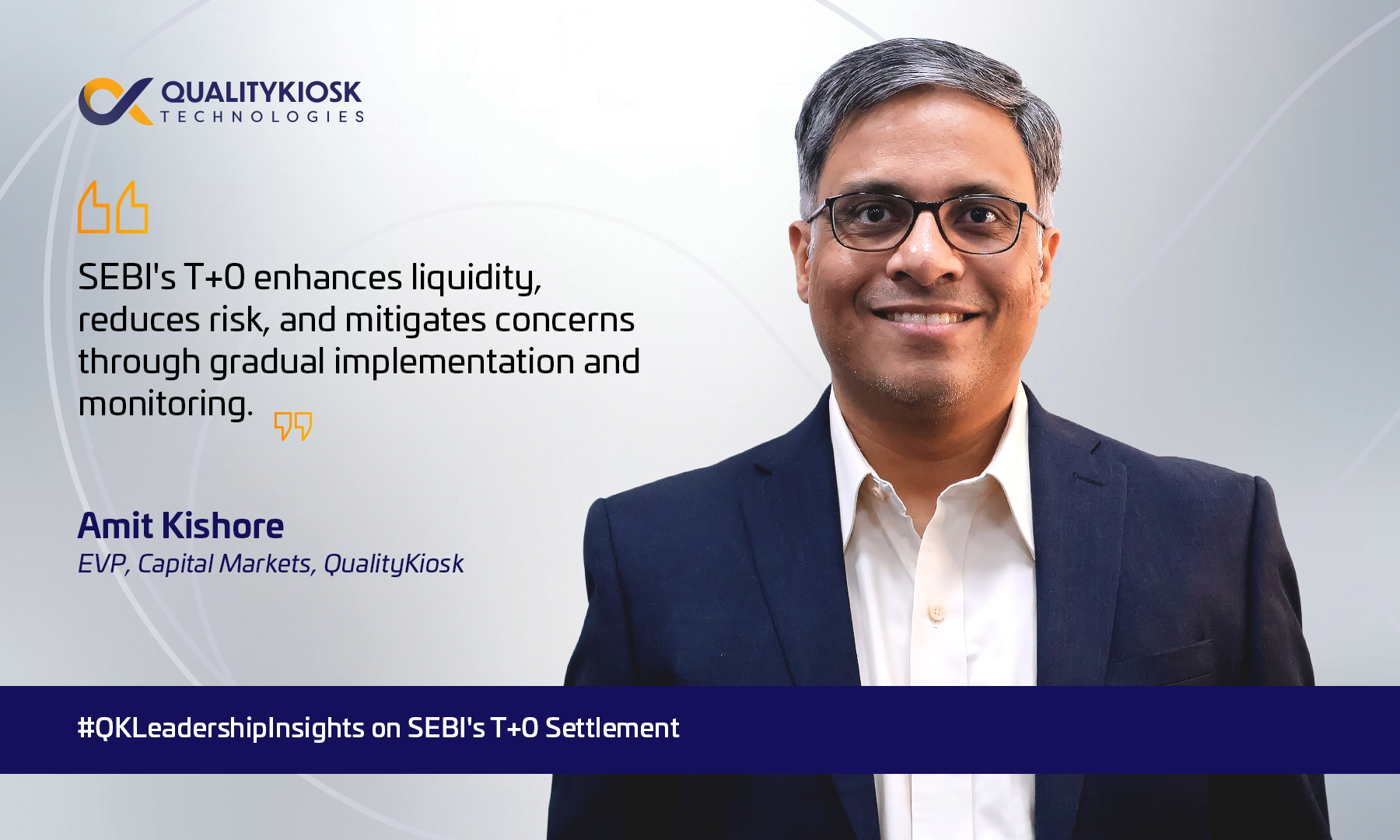SEBI’s T+0 settlement cycle aims to attract investors, enhance liquidity, and reduce risk.
The Securities and Exchange Board of India (SEBI) has recently introduced an optional T+0 settlement cycle and subsequent optional instant settlement in Indian Equities Cash Markets. This significant development aims to offer investors an instant settlement option, thereby maintaining liquidity in regulated markets and attracting investors from unregulated markets like crypto markets.
The trial run of the T+0 settlement started on March 28, 2024. It was launched for only 25 specific stocks and with a limited set of brokers to test the efficacy of a shorter settlement cycle. The T+0 settlement is, however, an optional choice for investors. They can still opt for the traditional T+1 settlement if needed.
In this blog post, we will take a deeper look at the objective, benefits, and concerns surrounding this new mechanism.
Objective and Background
The primary objective of this initiative is to provide investors with an instant settlement option, which is expected to enhance liquidity in the regulated markets and prevent a potential shift to less regulated markets like crypto markets.
SEBI has progressively shortened the settlement cycle over the years, with T+1 settlement fully implemented from January 2023. This move is a natural progression towards further improving the efficiency and safety of the Indian securities market.
Proposed Mechanism
The proposed mechanism involves introducing optional T+0 and instant settlement cycles for the equity cash segment. The implementation will be phased, with operational details outlined below:
Phase 1: Optional T+0 Settlement Cycle
- Trades will be settled on the same day, with settlement of funds and securities completed by the end of the trading day.
- Initially, the bottom 100 out of the top 500 scrips in terms of market capitalization will be made available for T+0 settlement. The list of securities and calendar for migration will be published by the exchanges.
- Securities under trade-for-trade settlement and trading in periodic call auction sessions will not be permitted for T+0.
Phase 2: Optional Instant Settlement Cycle
- This phase will involve immediate trade-by-trade settlement of funds and securities.
- After the implementation of phase 2, the mechanism of optional T+0 settlement implemented under phase 1 will be discontinued.
Benefits and Concerns
The benefits of this mechanism include:
- Faster Settlement: Investors will have quicker access to funds after a trade, enhancing their overall experience.
- Attracting Investors: The instant settlement option will attract investors from crypto markets where instant settlement is common, thereby enhancing liquidity in the regulated markets.
- Reduced Systemic Risk: The prompt settlement of trades will reduce systemic risk by minimizing the time during which trades are exposed to market fluctuations.
However, there are also potential concerns:
- Liquidity Fragmentation: The introduction of two different settlement cycles (T+0 and T+1) may lead to liquidity fragmentation, affecting efficient price discovery.
- Price Divergence: Prices may vary between the T+0 and T+1 cycles, potentially creating arbitrage opportunities.
- Operational Challenges: Implementing and managing the new cycle will require significant operational changes and investments.
Rationale and Mitigation Strategies
The goal of this initiative is to offer investors an option for instant settlement in Indian stock markets, thereby enhancing liquidity and reducing systemic risk. To mitigate the potential concerns, SEBI has outlined the following strategies:
- Gradual Implementation: The phased rollout will minimize disruptions and allow for adjustments as needed.
- Monitoring and Adjustments: Regular assessments will be conducted to monitor the impact of the new cycle and make adjustments as necessary.
In summary, SEBI’s introduction of an optional T+0 settlement cycle and subsequent optional instant settlement in Indian Equities Cash Markets is a significant step towards enhancing the efficiency and safety of the Indian securities market. While there are potential concerns, the benefits of faster settlement, attracting investors, and reduced systemic risk make this initiative a valuable addition to the market. As the mechanism is implemented and monitored, it is expected to balance efficiency and risk while benefiting investors.
About the Author
Amit Kishore is an experienced senior technology leader with over 25 years of experience in the financial and technology services industry. He has held leadership roles at prominent firms such as Broadridge, Goldman Sachs, Fidelity Worldwide Investment, Macquarie Group, and Royal Bank of Scotland, driving large-scale digital transformation initiatives across the financial markets and wealth management spectrum.
As the Executive Vice President of the Capital Markets division at QualityKiosk Technologies, Kishore closely collaborates with the senior leadership, sales, and technology teams to deliver customer-centric digital financial solutions.





